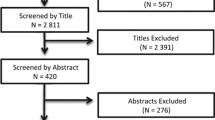Abstract
Photobiomodulation is a treatment that has been widely used in neurotrauma and neurodegenerative diseases. In the present study, low-level laser therapy was administered to patients with spinal cord injury. Twenty-five individuals were divided into two groups: placebo photobiomodulation plus physiotherapy and active photobiomodulation plus physiotherapy. Electromyographic evaluations were performed before and after 12 sessions of phototherapy as well as 30 days after the end of treatment. In the active phototherapy group, median frequency values of the brachial biceps and femoral quadriceps muscles were higher at rest and during isotonic contraction 30 days after photobiomodulation (p = 0.0258). No significant results were found regarding the rest and isotonic conditions in the pre-photobiomodulation period (p = 0.950) or immediately following photobiomodulation (p = 0.262). The data provide evidence that phototherapy improves motor responses in individuals with spinal cord injury, as demonstrated by differences in the EMG signal before and after treatment. Trial registration: NCT 03031223




Similar content being viewed by others
References
Thuret S, Moon LDF, Gage FH (2006) Therapeutic interventions after spinal cord injury. Nature 7:628–643. https://doi.org/10.1038/nrn1955
Veronez S, Assis L, Del Campo P, de Oliveira F, de Castro G, Renno ACM, Medalha CC (2016) Effects of different fluences of low-level laser therapy in an experimental model of spinal cord injury in rats. Lasers Med Sci 1–7
Song JW, Li K, Liang ZW, Dai C, Shen XF, Gong YZ et al (2017) Low-level laser facilitates alternatively activated macrophage/microglia polarization and promotes functional recovery after crush spinal cord injury in rats. Sci Rep (Nature Publisher Group) 7:1
Abreu EMC, Nicolau RA (2015) Low intensity laser therapy on regeneration of nervous tissue after spinal cord injury. Rev Neurocienc 23(2):297–304
Wang X, Tian F, Soni SS, Gonzalez-Lima F, Liu H (2016) Interplay between up-regulation of cytochrome-c-oxidase and hemoglobin oxygenation induced by near-infrared laser. Sci Rep 6:30540
Wang X, Tian F, Reddy DD, Nalawade SS, Barrett DW, Gonzalez-Lima F et al (2017) Up-regulation of cerebral cytochrome-c-oxidase and hemodynamics by transcranial infrared laser stimulation: a broadband near-infrared spectroscopy study. J Cereb Blood Flow Metab. p 271678X17691783 Jan 01
Wu X, Dmitriev AE, Cardoso MJ, Viers-Costello AG, Borke RC, Streeter J, Anders JJ (2009) 810 nm Wavelength light: an effective therapy for transected or contused rat spinal cord. Lasers Surg Med 41(1):36–41
https://www.portaleducacao.com.br/conteudo/artigos/medicina/neuronio-motor-periferico/16308 (citado em 05/2017)
Politti F, Casellato C, Kalytczak MM, Garcia MBS, Biasotto-Gonzalez DA (2016) Characteristics of EMG frequency bands in temporomandibullar disorders patients. J Electromyogr Kinesiol 31:119–125
Byrnes KR, Waynant RW, Ilev IK, Wu X, Barna L, Smith K, Heckert R, Gerst H, Anders JJ (2005) Light promotes regeneration and functional recovery and alters the immune response after spinal cord injury. Lasers Surg Med 36:171–185. https://doi.org/10.1002/lsm.20143)
Holanda VM, Chavantes MC, Silva DFT, Holanda CVM, Oliveira JO et al (2016) Photobiomodulation of the dorsal root ganglion for the treatment of low back pain: a pilot study. Lasers Surg Med. https://doi.org/10.1002/lsm.22522
http://midia.atp.usp.br/impressos/redefor/EnsinoBiologia/Fisio_2011_2012/Fisiologia_v2_semana02.pdf (citado em 05/2017)
Nguyen DH, Cho N, Satkunendrarajah K, Austin JW, Wang J, Fehlings MG (2012) Immunoglobulin G (IgG) attenuates neuroinflammation and improves neurobehavioral recovery after cervical spinal cord injury. J Neuroinflammation 21:224. https://doi.org/10.1186/1742-2094-9-224
Ren Y, Young W (2013) Managing inflammation after spinal cord injury through manipulation of macrophage function. Neural Plast 2013:945034. https://doi.org/10.1155/2013/945034
Paula AA, Nicolau RA, Lima MO, Salgado MAC, Cogo JC (2014) Low-intensity laser therapy effect on the recovery of traumatic spinal cord injury. Lasers Med Sci 29:1849–1859. https://doi.org/10.1007/s10103-014-1586-4
Bohbot A (2010) Olfactory Ensheathing glia transplantation combined with laserpuncture® in human spinal cord injury: results measured by electromyography monitoring. Cell Transplant 19:179–184. https://doi.org/10.3727/096368910X492643
Alves AN, Ribeiro BG, Fernandes KPS, Souza NHC, Rocha LA, Nunes FD, Mesquita-Ferrari RA (2016) Comparative effects of low-level laser therapy pre-and post-injury on mRNA expression of MyoD, myogenin, and IL-6 during the skeletal muscle repair. Lasers Med Sci 31(4):679–685
Ando T, Sato S, Kobayashi H, Nawashiro H, Ashida H, Hamblin MR et al (2013) Low-level laser therapy for spinal cord injury in rats: effects of polarization. J Biomed Opt 18:098002. https://doi.org/10.1117/1.JBO.18.9.098002
Author information
Authors and Affiliations
Corresponding author
Ethics declarations
This study received approval from the Human Research Ethics Committee of the university under protocol CAAE: 56952716.2.0000.5511. All participants or their legal guardians received clarifications regarding the objectives and procedures of the study and those agreeing to participate signed a statement of informed consent.
Ancillary and post-trial care
At the end of the study, all volunteers allocated to the control group received phototherapy with the same protocol administered to the treatment group to avoid any inequality regarding treatment among the individuals.
Competing interests
The authors declare that they have no conflict of interest.
Rights and permissions
About this article
Cite this article
da Silva, F.C., Gomes, A.O., da Costa Palácio, P.R. et al. Photobiomodulation improves motor response in patients with spinal cord injury submitted to electromyographic evaluation: randomized clinical trial. Lasers Med Sci 33, 883–890 (2018). https://doi.org/10.1007/s10103-018-2447-3
Received:
Accepted:
Published:
Issue Date:
DOI: https://doi.org/10.1007/s10103-018-2447-3




